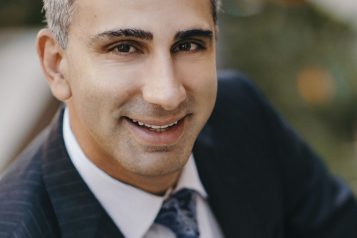Patients often visit plastic surgeon Dr. Stanley Poulos of Plastic Surgery Specialists in the San Francisco Bay area because they desire a firmer, flatter stomach, and a lot of these women and men arrive at their consultation thinking they know which procedure is necessary to achieve their goals. “Many patients believe that liposuction is the key to eliminating a bulging belly, but oftentimes a tummy tuck or a combination of both procedures is a better approach,” Dr. Poulos explains.
The factors that contribute to a patient’s midsection concerns, as well as their severity, are the main indicators of whether they are a candidate for liposuction, a tummy tuck or both. “In most cases, there are three main causes of belly bulge: Excess fat, muscle laxity and excess skin,” says Dr. Poulos. “Some patients have stubborn fat despite a healthy diet and regular exercise, while others have loose muscles after pregnancy. Excess skin can be the result of stretching during pregnancy or significant weight loss. Some patients experience all three of these issues.”
If a patient has excess fat and good skin elasticity, liposuction can likely deliver the stomach-flattening results they are looking for. “Through several tiny incisions, a fluid is introduced to help make the fat easier to remove. The fat is then partially liquified with either ultrasound (Vaser) or laser (SmartLipo) before it is suctioned out with minimal trauma to the tissues—and the addition of one of these energies offers some help with skin tightening,” Dr. Poulos explains. “With proper post-op care, these incisions are generally undetectable once healed.”
“It’s important for patients to understand that liposuction does not address excess or sagging skin or lax muscles,” explains Dr. Poulos. When these issues contribute to a bulging belly, a tummy tuck is usually the ideal solution—and liposuction can be incorporated if necessary to remove unwanted fat as well. (Patients with minimal excess fat may be candidates for non-invasive fat reduction with CoolSculpting once they are fully recovered after a tummy tuck.)
Dr. Poulos explains that there are a variety of tummy tuck approaches, including a mini-tummy tuck, full tummy tuck and high-tension tummy tuck, “and the ideal procedure for each patient depends on the degree of skin sagging and muscle laxity,” he explains. All of these approaches require an incision across the lower abdomen that can range from a few inches long to stretching from hip to hip. In most cases, the incision is placed within the pubic hairline so the resulting scar is easily concealed by panties or a bikini bottom.


Many plastic surgeons, including Dr. Poulos, also offer a drain-free tummy tuck for appropriate patients. “Using a special surgical adhesive called TissuGlu eliminates the hassle of emptying drains and keeping track of the amount of fluid, and makes recovery less stressful for patients,” he says. Many patients are concerned about pain after tummy tuck surgery as well, which is why Dr. Poulos often recommends a pain-control option called Exparel. Dr. Poulos explains, “Injected at the time of surgery, this local anesthetic provides pain relief for up to three days, and helps patients minimize or completely avoid taking narcotic- or opioid-based medications.”
“Liposuction and tummy tucks are safe, effective procedures that can dramatically improve the appearance of the stomach and a patient’s body as a whole,” but Dr. Poulos stresses that it’s important to seek a board-certified plastic surgeon with the experience and expertise to determine which procedure is ideal for each patient in order to achieve their goals.
For more information, visit Dr. Brian A. Levine's social media:

























